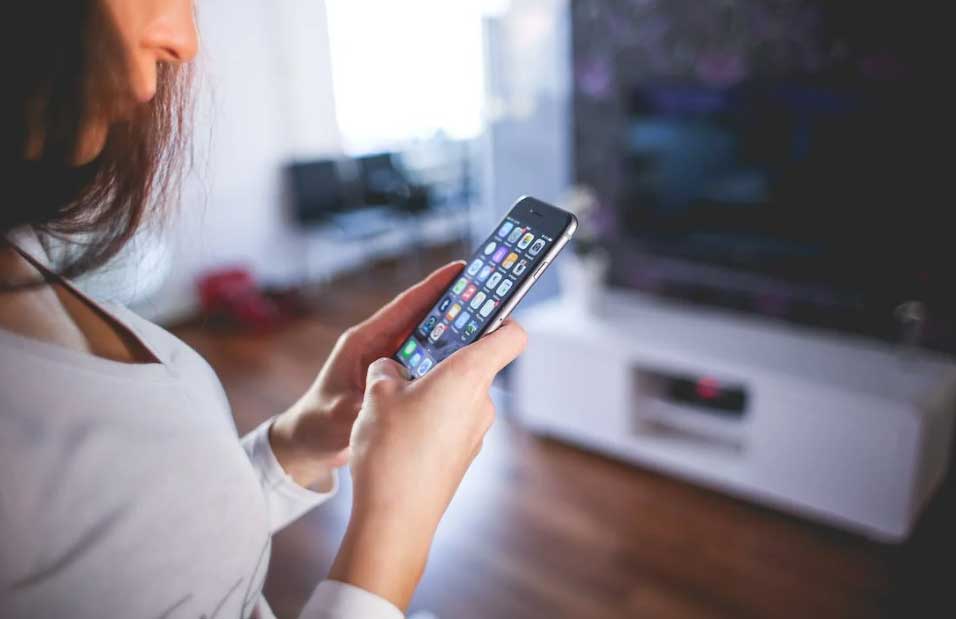Your iPhone is an incredible device that can do a lot for you. One of the most useful features is its ability to forward your voicemails to other people or even yourself. Whether you’re looking to share something funny with friends, need to send a message while away from home, or want to keep a record of important messages for later retrieval, this guide will show you how to do it quickly and easily.
Enhanced Flexibility: Can iPhones Forward Voicemails?
Let’s address the question that has likely brought you to this guide: “Can iPhones forward voicemails?” The answer is a resounding yes! Apple has thoughtfully designed the iPhone with this specific function in mind, acknowledging the need for users to share important voicemails.
This feature is not restricted to simple voice calls alone. You can share voicemail audio files through various channels – be it a traditional text message, an email, or even through non-Apple messaging apps installed on your iPhone. Voicemail forwarding works with popular messaging platforms like WhatsApp, Signal, and Telegram.

This opens up a world of possibilities and makes it easy to share voicemails with friends, family, and colleagues. What’s more, they don’t have to be an iPhone user to receive them. So whether they’re on an iPhone, an Android device, or a desktop, as long as they can receive emails or access the messaging app you’re using, they can receive the voicemail you’re forwarding. It’s all about ensuring communication is seamless, flexible, and, more importantly, accessible to all.
A Walkthrough to Forwarding a Voicemail from an iPhone
Having established that it is indeed possible to forward voicemails from your iPhone, let’s delve into the details and take a step-by-step look at the process.
1. Unlocking Your Communications Hub – The Phone App
Your journey begins on your iPhone’s home screen. Here, you’ll find the “Phone” icon, your gateway to all things communication-related on your device. Tap on it to launch the app. The Phone app is a comprehensive communication center, providing access to your call logs, contacts, dialer, and of course, your voicemails.
2. Delving into the Voicemail Section
With the Phone app open, your next destination is the “Voicemail” tab. You can find it in the lower menu bar. From there, tap on “Voicemail,” and it will take you directly to your voicemail inbox. Here, you’ll find all your voicemails neatly arranged for your perusal.
3. Picking the Voicemail to Forward
The voicemail inbox presents you with a list of all your voicemails. Take a moment to scroll through them to find the voicemail you wish to forward. Once you’ve identified it, a quick tap will open it. If you’re unsure about which voicemail is the right one, simply tap on it to listen and confirm that it’s the message you want to share.
4. Forwarding the Message
Once the voicemail message is open, you’ll find the “Share” button – often symbolized by a box with an upward-facing arrow. Tapping on this button cues the message for forwarding, preparing it to be shared via your preferred platform.
5. Deciding on the Forwarding Method
This step unveils a variety of options for sending your voicemail message. Depending on what works best for you and the recipient, you may want to forward the voicemail via text or email. If you have other messaging apps installed on your phone, you may see additional options.
6. Dispatching the Voicemail to the Recipient
Now that you’ve selected your forwarding method, the final step involves sending the voicemail message to the intended recipient. Whether you opted for a text message or an email, a new draft will automatically appear, primed for you to add the recipient’s contact details and any accompanying message. All that’s left to do is hit “Send,” and your voicemail message will be on its way!
So there you have it – a detailed guide to forwarding voicemail messages from your iPhone, breaking down each step to ensure the process is clear and easy to follow. The ability to forward voicemails is an often overlooked but incredibly useful tool, making it simple to share important messages, save them for later, or move them to a more convenient platform.

Bonus Tip: How to Save a Forwarded Voicemail on Your Computer
If you’ve ever wondered whether it’s possible to save voicemails on your computer for longer-term storage and easier access, you’re in luck. It’s actually a straightforward process, especially once you’ve forwarded the voicemail from your iPhone to an email address.
1. Forward the Voicemail to Your Email
As we’ve discussed in detail above, the first step is to forward the voicemail from your iPhone to your email address. By doing this, you will receive the voicemail as an audio file attachment in an email.
2. Open the Email and Download the Attachment
Next, open the email containing the forwarded voicemail on your computer. Click on the attachment to download it. Make sure to note the location where the file is saved.
3. Organize Your Voicemails
For easier access in the future, you might consider creating a special folder on your computer where you save all downloaded voicemails. This way, you can keep your voicemails organized and easily accessible.

The Legal Aspects of Voicemail Forwarding
While voicemail forwarding is a useful tool, it’s also crucial to understand the legal implications of sharing these voice messages. Here are a few helpful points of consideration:
Confidentiality and Consent
First and foremost, you should be aware that voicemails can contain sensitive or confidential information. If you’re forwarding a voicemail from someone else without their consent, you could potentially be invading their privacy. Before sharing a voicemail, it’s good practice to seek consent from the person who left the message.
One good rule of thumb to follow is to put yourself in the original sender’s shoes. Ask yourself, “Had I sent that message, would I want someone sharing it with others?” If you’re at all unsure, it’s probably best to avoid sharing the voicemail.
Legal Frameworks
Legal frameworks such as GDPR in the EU and similar data protection laws in other jurisdictions have specific provisions related to voicemails. For instance, if you’re a business and you’re forwarding voicemails containing personal data, you could be subject to these laws. In the United States, however, no such legal buffers exist.
In any event, it’s always wise to consult with a legal professional if you’re unsure about the laws pertaining to voicemail forwarding in your specific context. Another rule of thumb is to treat voicemails with the same level of confidentiality as you would an email or a letter.
Remember, the power to forward voicemails comes with the responsibility to respect privacy and confidentiality. Be mindful of these aspects while taking advantage of the functionality that modern technology provides.
Important Considerations When Forwarding iPhone Voicemails
While forwarding voicemails from your iPhone can be quite convenient, there are several important points that you should bear in mind to maximize this feature’s benefits while ensuring the security and privacy of your messages.
1. Audio Files Take Center Stage
When you forward voicemails from your iPhone, remember that the feature focuses on sharing the audio file – the heart of the voicemail. The audio recording, which captures the caller’s message in their own voice, is what gets shared.
It’s important to note here that while some mobile carriers provide text transcriptions of your voicemail messages, this doesn’t come into play while forwarding. The forwarding feature exclusively deals with the audio files themselves, leaving the text transcription behind in your voicemail inbox.
2. Voicemails Are Your Responsibility
Voicemails can often contain sensitive information, making it crucial to be mindful of who you’re sharing them with. Once a voicemail message is forwarded, the recipient has the liberty to do whatever they wish with the file.
To protect your privacy and maintain the confidentiality of the information contained in the voicemails, it’s advised to only forward these messages to individuals you trust. This simple yet critical step can go a long way in safeguarding your personal information.

3. Verify Before You Forward
Imagine accidentally forwarding a personal voicemail to your work colleague or vice versa – quite a predicament, right? To avoid such embarrassing and potentially problematic situations, always confirm your selection before forwarding a voicemail.
It’s good practice to listen to the voicemail once more before sending it off. This ensures that you’re sharing the correct message and prevents any inadvertent forwarding of private voicemails.
4. The Joy of Cross-Platform Sharing
One of the standout features of voicemail forwarding is its cross-platform compatibility. Forwarded voicemails are receivable on all types of devices, not just iPhones. The recipient could be using an Android smartphone, a PC, a Mac, or any device capable of receiving emails or texts – they’ll still be able to receive and listen to the forwarded voicemail.
This universal accessibility broadens the horizons of voicemail sharing, making it a convenient and flexible method to share important voice messages.
5. A Handy Tool for Archiving Voicemails
Another significant benefit of forwarding voicemails is that it serves as a convenient way to maintain records of important messages. Sending your voicemails to cloud storage, another device, or even an external hard drive is possible. All you have to do is forward them via text or email for fast, efficient delivery.
By following these notes and guidelines, you can maximize the functionality and convenience of voicemail forwarding while ensuring the privacy and security of your voice messages. With these points in mind, go ahead and make the most of this handy feature.
Final Thoughts
Forwarding voicemail messages from your iPhone is a surprisingly straightforward process once you know how to do it. Not only does it allow you to share important messages with others, but it also offers an excellent way to archive your voicemails for future reference. Just keep in mind the tips provided in our guide, and you’ll master this handy feature in no time.
Meet Ry, “TechGuru,” a 36-year-old technology enthusiast with a deep passion for tech innovations. With extensive experience, he specializes in gaming hardware and software, and has expertise in gadgets, custom PCs, and audio.
Besides writing about tech and reviewing new products, he enjoys traveling, hiking, and photography. Committed to keeping up with the latest industry trends, he aims to guide readers in making informed tech decisions.

